Four low-cost wildlife habitats made from recycled materials
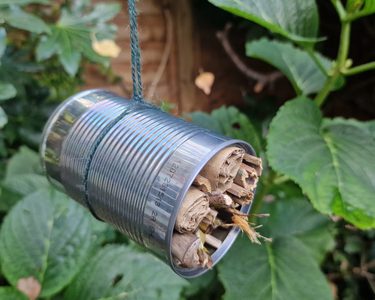
Protecting and supporting wildlife is an essential part of maintaining biodiversity in your garden. Trees, berried-shrubs and seedheads can all provide instant shelter and nourishment – but you can also add your own homemade refuges and reserves.
Take a leaf out of Recycle Week’s ‘Rescue Me’ theme (14-24 October), which focuses on preventing recyclable items from heading to the rubbish bin. Look around your house and garden to see how you can breathe new life into old tins, bins and roof tiles to create habitats for nature. Here’s some ideas…
Tin-can habitat 🔗
Overwintering insects, including bees, can take shelter in this little hollow home (pictured above). Use a can opener on its side to take off the top of the can so it doesn’t leave sharp edges. Thoroughly wash the can and leave to dry.
Collect together old bamboo canes, twigs, bark, pinecones and moss from your garden and stuff into the can, tightly, so they won’t fall out. You could also use tubes of corrugated cardboard or tightly rolled strips of newspaper. Loop with string and hang horizontally, one metre from the ground, in a warm spot near foliage. Make sure the open end is slightly lower, so water doesn’t get into the can.
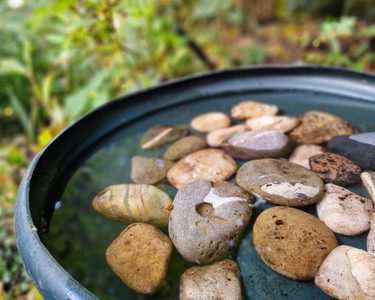
Bin-lid birdbath 🔗
A water source can be one of the best ways to encourage amphibians, insects and birds to your garden. Any shallow, watertight container - such as an upturned bin lid, or old compost lid - can create a place for birds and insects to bathe and drink. Healthy, clean feathers help birds keep warm and escape from predators.
Elevate the upturned lid on stones or bricks to give birds a 360-degree view, and no more than 6ft from shrubs or trees, so they can quickly escape predators. Fill with pebbles so there are places to perch. Place out of direct sunlight (so it doesn’t become too hot in the summer) and clean every week to avoid bacteria building up, and to remove frozen water.
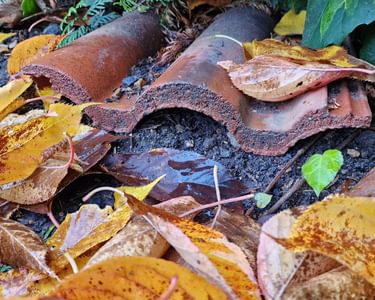
Reptile rooftile refuge 🔗
Old roof tiles or corrugated iron sheets placed on the ground in a sunny spot absorb the winter sun and provide reptiles with a cosy cover from predators. Slow worms, common lizards or even grass snakes will enjoy the warmth and moisture.
Alternatively, place in a damp, shady spot under a hedge and you could also offer a home to frogs and toads. As an added benefit you may find slugs congregate underneath, which will be eaten or gently escorted off site!
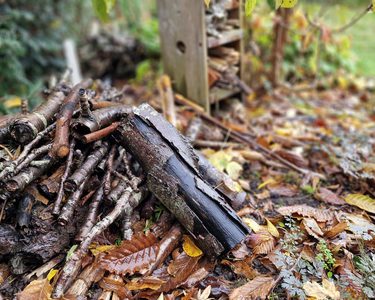
Log lodge 🔗
Did you know that even one log, partially buried, can provide a habitat for slow worms, beetles and woodlice? Create a small pile of decaying logs, and this will be a refuge for wood-boring beetles, grubs and wasps, which in turn provide food for smaller mammals, reptiles and amphibians.
Your log pile can be any shape or size, hidden away under a hedge or made into a striking tower or wigwam and given pride of place. Stuff gaps with leaves to offer even more protection from the winter weather.
For more information and advice about wildlife gardening, go to our wildlife gardening hub here.
More gardening advice
-
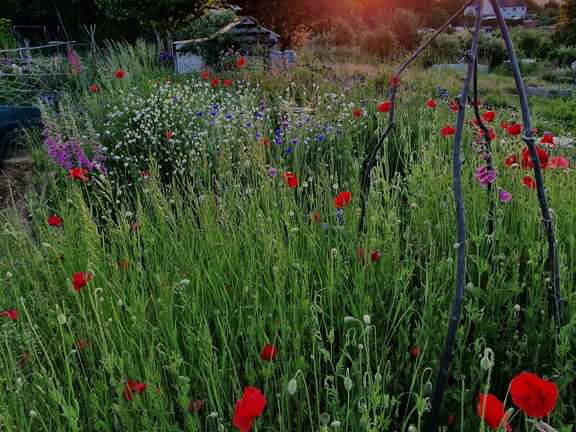
Four tips for boosting allotment biodiversity
This year’s National Allotment Week is celebrating biodiversity on UK allotments. Here, we share some ways to stem biodiversity loss on your plot.
-
Ways to beat the blight!
Anton Rosenfeld shares advice about how to spot blight on your vegetable crops – and what to do about it
-
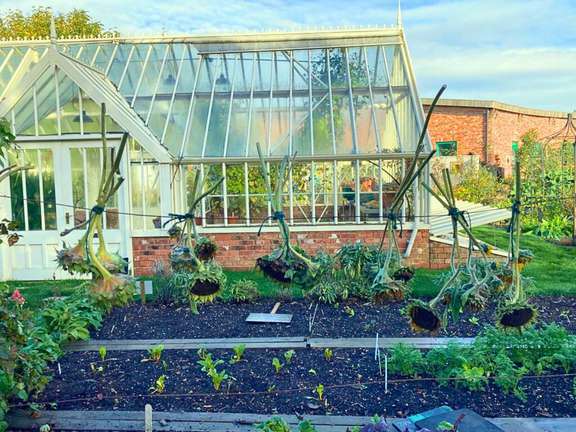
Five ways to feed garden birds for free
Feeding wild birds is a great way to encourage more of them into your garden and support them during the cold spell - but it doesn't have to cost the earth.
